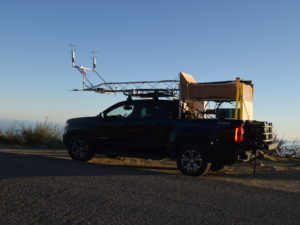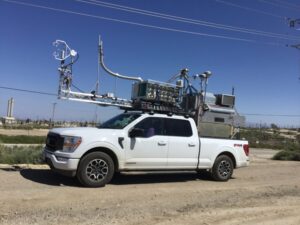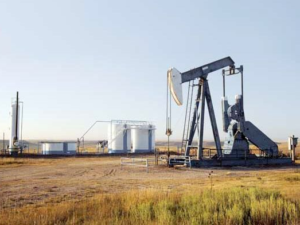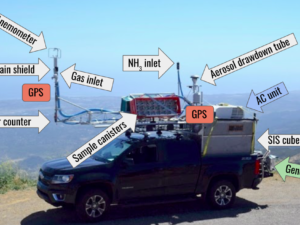BRI recently installed one of its meteorology trailers, Meteo-Trailer 1, at the California Polytechnic State University research dairy in San Luis Obispo, CA. The installation is to characterize diurnal and seasonal meteorology cycles at the dairy. The data being collected at the research dairy will support a new BRI dairy research project for the California Department of Food and Agriculture (CDFA). This CDFA project will study the research dairy as a baseline for comparison with other dairies spanning the California range of climates. The project is in partnership with Tryg Lundquist, a Cal Poly professor, The Aerospace Corporation, and the Blake Lab at the University of California, Irvine (UCI).
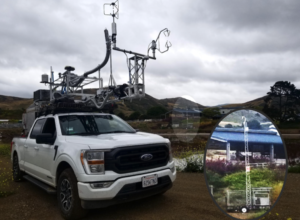
BRI installs Meteo-Trailer at the Cal Poly Research Dairy, then SISTER surveys dairy meteorology
Meteo-Trailer 1 measures winds at 10 meters – high enough to characterize the overall dairy wind flow and was sited near the overflow wastewater lagoon. Other meteorology parameters include humidity, solar insolation, and temperature. One advantage of Meteo Trailer 1’s is its relocatability, e.g., to characterize meteorology at different locations around the dairy. For example, windflows follow the terrain north of the main dairy barn, which slopes upwards to a small, raised mesa, ~20 m above the lagoons. The terrain’s structure can cause complexity in the wind flows around the dairy. For example, winds at the sub-dairy scale are complicated by the high (~4 m) dirt berm (an earth mound that diverts winds) immediately south of the lagoons and the higher (~3-4 m) elevation of the corrals above the lagoons. Additionally, the lagoons’ cold water (relative to the dairy’s bare earth) causes air subsidence (descending motion), which by continuity is complemented by rising air elsewhere and usually nearby.
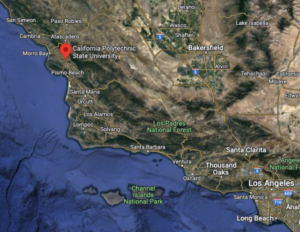
Map shows Los Angeles, CA area and location of the California Polytechnic State University location (red marker).
This complexity is evident in SISTER data collected recently at the research dairy, with clear evidence of wind convergence and divergence (in 2D winds). SISTER (Standard Instrumentation Suite: Truck Enabled for Response) measures meteorology, including 3D winds and a range of trace gasses while under motion at up to highway speeds. (Note, dairy surveys are at speeds of a few meters per second or less.) Wind convergence and divergence imply there is strong three-dimensionality in dairy winds. Additional complication arises from strong diurnal cycles, including large, dramatic wind shifts. For example, even during this short (~1 hr) visit, winds shifted from southerly to north-northwesterly while SISTER was on the berm.
b-facility (to a few meters); however, only for the time it is onsite. Thus, SISTER misses the rest of the diurnal cycle – patterns that Meteo Trailer 1 captures. An example short dataset spanning two days clearly shows the meteorology diurnal cycles (see figure below). Although there is an overall strengthening pressure trend, there also are diurnal cycles modulating this rise (higher pressure at noon and midnight). Winds are mostly from the north-northwest to north, dying down significantly at night. Wind direction can veer significantly in the few hours after dawn and late at night when they are generally very weak. These days were overcast, and thus, the solar radiation was significantly lower than on a sunny day. On one day, the nighttime humidity reached saturation, while on the second day, it did not. Unsurprisingly, humidity follows an inverse trend to temperature, which was coolest around dawn and warmest at noon on these overcast days.
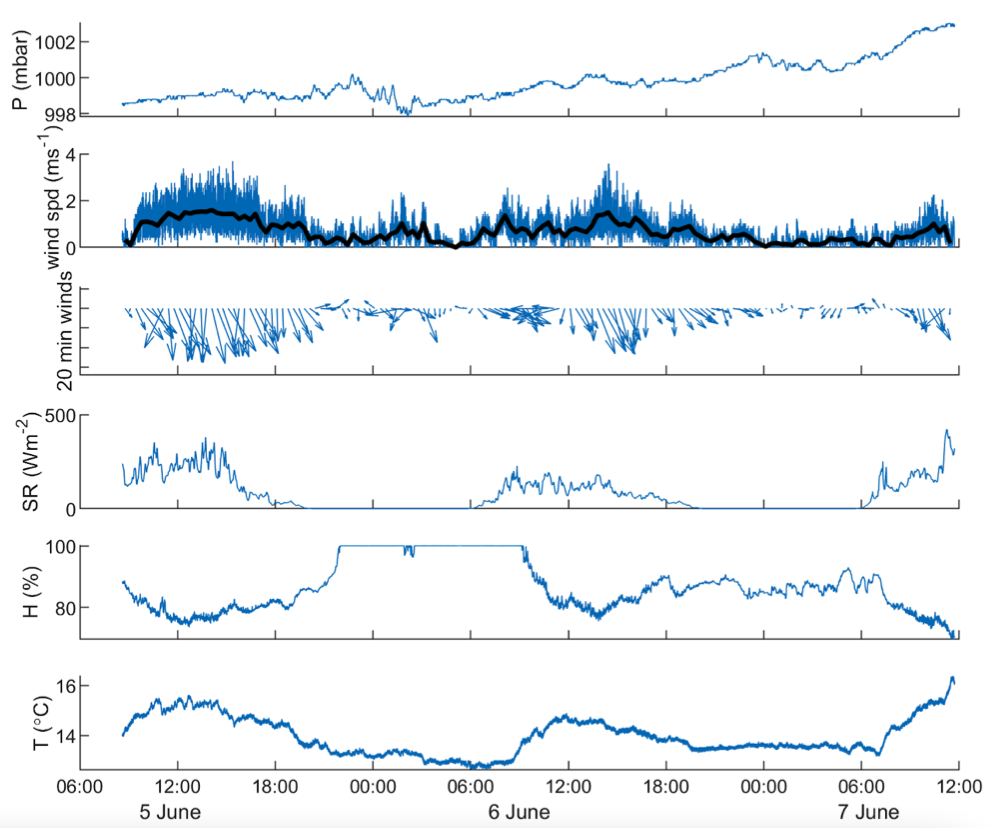
The CDFA study will measure the climate/environmental emissions footprint of improved manure management practices. Livestock are an important contributor to greenhouse gas (GHG) emissions, including carbon dioxide (CO2) and methane (CH4). These emissions arise directly from digestion (enteric fermentation) and indirectly from manure. Climate also plays a role in these emissions – warmer temperatures increase indirect and direct emissions. For instance, a beef cow in a temperate climate may emit around 240 grams per day, whereas a beef cow in a tropical climate could emit approximately 350 grams per day. Other differences result from food type, animal activity levels, and lactation stage, among others – and these all may influence each other! Overall, climate has positive feedback on emissions.
The CDFA study will create a dairy baseline (for California) of trace gas emissions including GHGs and criteria pollutants collected by SISTER, airborne remote sensing, and data mining the team’s extensive data archives. The dataset is supported by wastewater, manure, solids, soil, and farm operations characterizations and will provide a basis to assess the CARB Benefits and co-Benefits Calculator Tool. The evaluation in the project will be based on a statistically significant number of (anonymized and aggregated) dairies, with and without an Alternative Manure Management Program (AMMP) and/or a Dairy Digester Research & Development Program (DDRDP). Studied dairies will span California’s diverse dairies’ climates and seasons for various CDFA-promoted dairy waste management practices at large and small dairies.
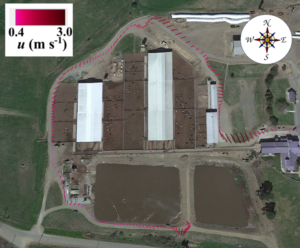
Oblique view of the Cal Poly Dairy and wind speed (u), lines show direction where wind is flowing; the length and color show speed. Displayed in the Google Earth environment.
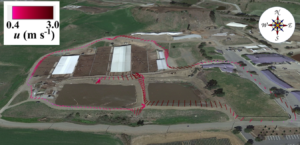
Oblique view of the Cal Poly Dairy and wind speed (u), lines show direction where wind is flowing; the length and color show speed. Displayed in the Google Earth environment.
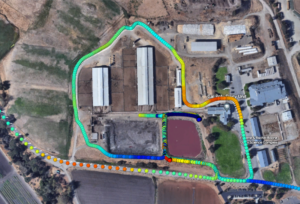
Humidity around the Cal Poly Dairy. Low humidity is dark blue, high humidity is red (69-73%) .
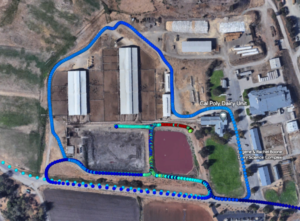
Temperature around the Cal Poly Dairy. Low temperature is dark blue, high temperature is red (16.6-17.5 Celsius).
